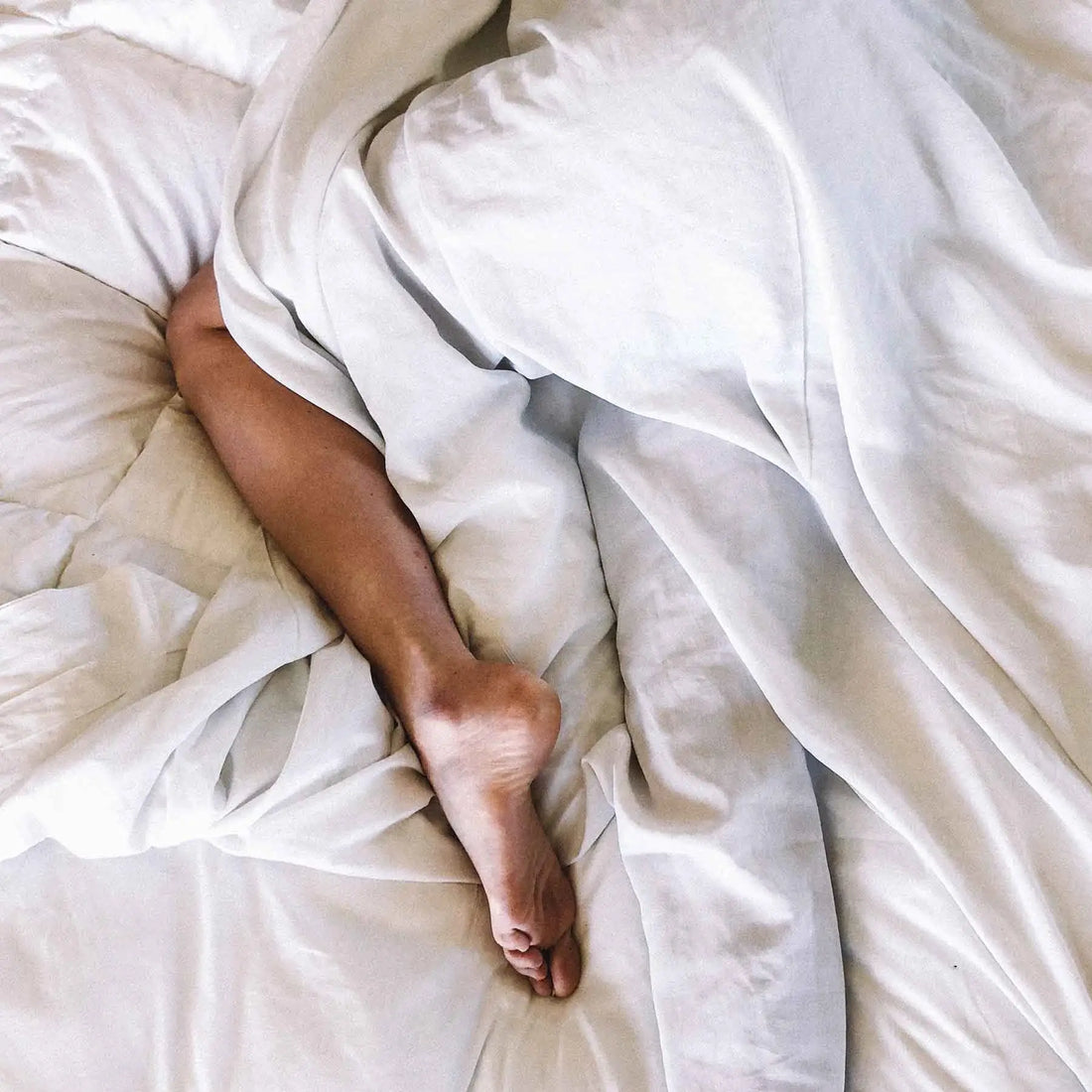Join us as we delve into the fascinating subject of sleep positions and discover how to pinpoint the ideal one for you. Here at Remly Sleep, our dedication lies in using research to fuel product innovation, and The Dream Lab is our platform to share the insights we acquire with you.
Unraveling Sleep Positions
Three primary sleep positions exist: back, side, and stomach. Each comes with its unique advantages and disadvantages, and personal comfort alongside health considerations determine the best sleep position for every individual. Beyond the primary sleep positions, various adjustments, like using a pillow to lift your legs or situating one between your knees, can enhance your rest further. When choosing the right position for you, it's paramount to think about your comfort level, health, and the quality of your sleep. Understanding how these positions can influence your sleep quality and overall health is vital. Learn more about the core principles of sleep in this article about why we sleep.
Back Sleepers
Advantages:
- Spine Alignment: Resting on your back supports natural spine alignment, mitigating the risk of back and neck discomfort. This posture can help stave off persistent pain issues over time.
- Minimized Pressure Points: This position distributes body weight uniformly, decreasing pressure points and the likelihood of discomfort. Back sleeping can also provide relief for conditions like sciatica or herniated discs.
- Prevention of Facial Wrinkles: With your face not pressed against a pillow, there is less chance of developing facial wrinkles and sleep lines. Back sleeping can contribute to maintaining a youthful appearance as you age.
- Lower Risk of Sleep-related Injuries: Back sleepers are less likely to suffer injuries due to restless sleep, such as shoulder impingement or rotator cuff issues.
Drawbacks:
- Snoring and Sleep Apnea: Back sleeping can intensify snoring and symptoms of sleep apnea, as the tongue and soft tissues in the throat may obstruct the airway. To mitigate this, you might experiment with an elevated pillow to maintain your head in a more favorable position.
- Acid Reflux: Lying completely flat on your back can heighten the risk of acid reflux, particularly for those with gastroesophageal reflux disease (GERD). If you experience GERD, consider propping yourself up with pillows or utilizing a wedge pillow to lessen symptoms.
Side Sleepers
Advantages:
- Lessened Snoring and Sleep Apnea: Sleeping on your side can help keep the airway unobstructed, lessening the risk of snoring and sleep apnea. This position can markedly enhance sleep quality for individuals dealing with these conditions.
- Diminished Acid Reflux: Resting on the left side can minimize acid reflux symptoms by positioning the stomach beneath the esophagus. This alignment helps prevent stomach acid from surging back up into the esophagus, averting discomfort and potential damage.
- Support for Pregnancy: Side sleeping, particularly on the left side, is often recommended for pregnant women, as it can enhance blood flow to the uterus and lower the risk of complications.
Drawbacks:
- Pressure on Shoulder and Hip: Side sleeping can exert pressure on the shoulder and hip joints, potentially causing discomfort or pain. To alleviate this, consider using a contoured pillow for your head and a pillow between your knees to maintain proper spinal alignment.
- Facial Wrinkles and Sleep Lines: Lying on one side of the face can contribute to the development of facial wrinkles and sleep lines. To mitigate this risk, you might want to try a satin or silk pillowcase, which can reduce skin friction.
Stomach Sleepers
Drawbacks:
- Neck Strain: Sleeping on your stomach often necessitates turning your head to one side, which can strain the neck muscles and result in discomfort. Over time, this strain may contribute to chronic pain and stiffness.
- Spinal Misalignment: This position can force the spine into an unnatural curve, leading to lower back discomfort. It's crucial to consider the long-term implications of stomach sleeping on your spinal health.
- Pressure on Internal Organs: Stomach sleeping can exert additional pressure on your internal organs, potentially causing discomfort and impairing blood flow.
Identifying the Ideal Sleep Position for You
Several factors, including personal comfort, health issues, and the quality of your sleep environment, influence the determination of the best sleep position. Here are a few tips to assist you in identifying the optimal sleep position:
- Assess Your Health: Evaluate your health conditions and seek advice from a healthcare professional if required. For example, side sleeping may be recommended for those with sleep apnea, while back sleeping could be preferable for individuals with GERD. You may also want to learn more about the symptoms, causes, and treatments of sleep disorders.
- Listen to Your Body: Pay attention to how your body reacts in different sleep positions. Choose the position that offers the most comfort and support while minimizing pain and discomfort. Experimenting with various positions can help you identify the one that suits your body best.
- Invest in a Supportive Mattress and Pillows: Make sure your mattress and pillows are supportive and suited to your preferred sleep position. For instance, side sleepers may benefit from a thicker pillow to maintain proper spinal alignment, while back sleepers might need a thinner pillow to prevent neck strain.
- Modify Your Sleep Environment: Adjust your sleep environment to better accommodate your preferred sleep position. For example, if you're a side sleeper, you might want to use a body pillow for extra support. Conversely, if you're a back sleeper, elevating your legs with a pillow could help alleviate lower back strain.
- Allow Time for Adjustment: If you're trying to switch your sleep position for health reasons, be patient with yourself. It can take several weeks for your body to acclimatize to a new sleep position, so be persistent and patient. Gradually transitioning to the new position can help make the change smoother.
In conclusion, the best sleep position for you will depend on your individual needs, comfort preferences, and health considerations. By trying out different positions and making adjustments to your sleep environment, you can optimize your sleep quality and overall well-being.
Thanks for joining us in The Dream Lab. Remly Sleep is committed to improving your sleep by sharing the latest sleep research and incorporating this knowledge into our innovative products. We're thrilled to journey together and uncover more insights on sleep and well-being.




